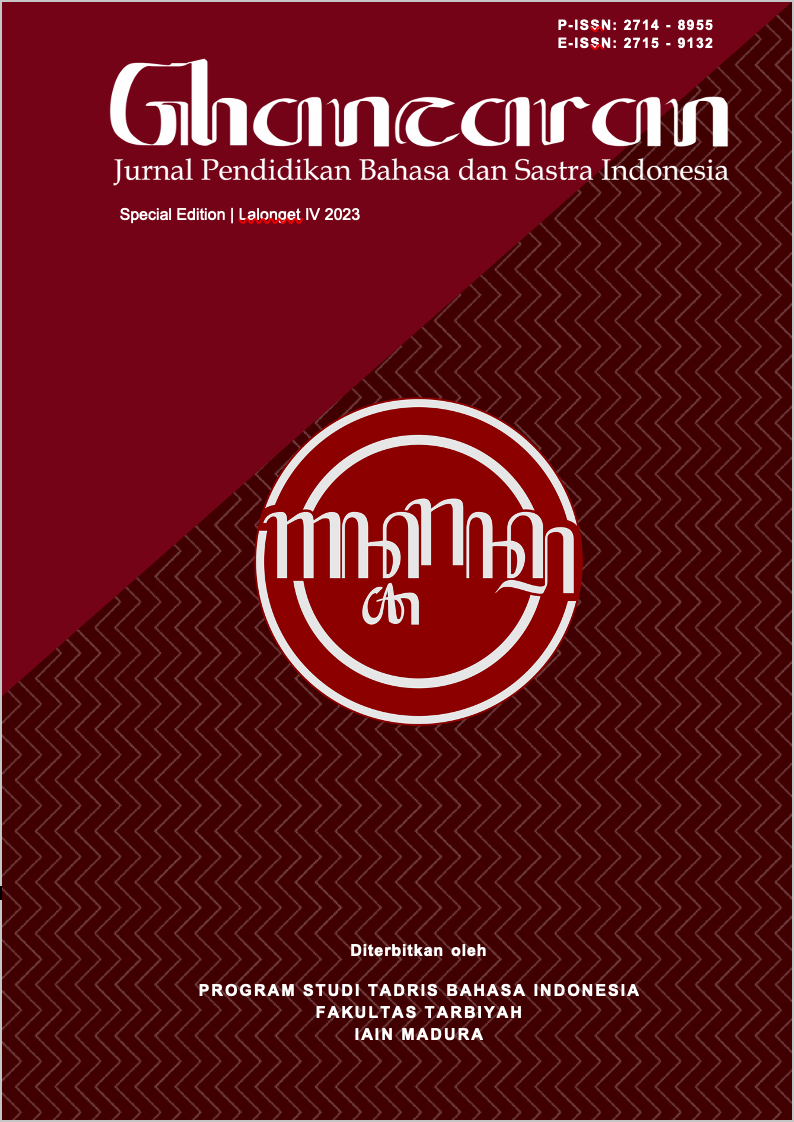Analisis User Interface dan User Experience Kamus Besar Bahasa Indonesia (KBBI) Digital
 Abstract views: 533
,
Abstract views: 533
,
 PDF downloads: 446
PDF downloads: 446
Abstract
In the digital era and increasingly developing technology, digital dictionaries, such as the Big Indonesian Dictionary (KBBI), have become an inseparable part of our daily lives. User experience and user interface in digital KBBI are very important factors in ensuring its effectiveness and usability. The method used in this research is simple qualitative and quantitative descriptive methods. Descriptive methods are needed to describe the data obtained from the KBBI user survey and quantitative data is used to provide a percentage of the KBBI user survey. This research analyzes qualitative and quantitative data from users of the Big Indonesian Dictionary (KBBI) using survey filling procedures. A total of 100 students filled out this survey and data was obtained for 90 students using KBBI. Of the 90 students, 96% of them are digital KBBI users. In terms of user interface, digital KBBI users expressed satisfaction by showing an NPS score of +5 and user experience showing the number 0 on the NPS scale. However, users realize that the digital KBBI needs improvement in the future so that it can be used by all groups and has a better appearance.
Downloads
References
Aswan. (n.d.). 123 Seminar Internasional Riksa Bahasa XIII Pemanfaatan Kamus Besar Bahasa Indonesia (Kbbi Edisi V) Versi Aplikasi Dalam Kegiatan Literasi Di Community Learning Center Pontian Fico, Sabah Malaysia. Retrieved September 25, 2023.
Creswell, J. W. (2003). Research Design Qualitative, Quantitative. and Mixed Methods Approaches Second Edition Sage Publications International Educational and Professional Publisher Thousand Oaks London New Delhi.
Dharmayanti, D., Bachtiar, A. M., & Wibawa, A. P. (2018). Analysis of User Interface and User Experience on Comrades Application. IOP Conference Series: Materials Science and Engineering, 407(1).
Elo, S., Kyngäs, H., & Kyngä, H. (2008). The qualitative content analysis Counseling of of chronically ill patients and people with overweight View project Wellnes profile of older people View project The qualitative content analysis process. Article in Journal of Advanced Nursing, 62(1), 107–115.
Gomm, R. (2008). Social Research Methodology. Social Research Methodology.
Kamajaya, I., Moeljadi, D., & Amalia, D. (2017). KBBI Daring: A Revolution in The Indonesian. ELex 2017: Lexicography From Scratch, October, 513–530.
Kraft, C. (2012). User Experience and Why It Matters. In User Experience Innovation.
Mailani, O., Nuraeni, I., Syakila, S. A., Lazuardi, J., & Komunikasi, P. I. (2022). Bahasa Sebagai Alat Komunikasi Dalam Kehidupan Manusia. Kampret Journal, 1(2), 1–10.
Moeljadi, D. (n.d.). Building the KamusBesarBahasa Indonesia ( KBBI ) Database and Its Applications.
Pratama, M. A. T., & Cahyadi, A. T. (2020). Effect of User Interface and User Experience on Application Sales. IOP Conference Series: Materials Science and Engineering, 879(1).
Presiden Republik Indonesia. (2021). Standar Nasional Pendidikan. 102501.
Putikadyanto, A. P. A., Efendi, A. N., Romadhon, S., Amin, M. B., & Sefrianah, N. A. (2021). Persepsi Siswa terhadap Pembelajaran Bahasa Indonesia Berbasis Daring di SMAN 1 Pasuruan. GHANCARAN: Jurnal Pendidikan Bahasa dan Sastra Indonesia, 104-116.
Putikadyanto, A. P. A., Zamahsari, G. K., & Thoha, M. (2022, November). A Bibliometric Analysis of Digital Game-Based Language Learning to Support Future Language Learning. In Proceedings of the 7th International Conference on Sustainable Information Engineering and Technology (pp. 207-211).
Santoso, J. (2018). Usability User Interface dan User Experience Media Pembelajaran Kamus Kolok Bengkala Berbasis Android. Jurnal Sistem Dan Informatika, 12(2), 174–181.
Copyright (c) 2023 GHANCARAN: Jurnal Pendidikan Bahasa dan Sastra Indonesia

This work is licensed under a Creative Commons Attribution-ShareAlike 4.0 International License.
Ghancaran: Jurnal Pendidikan Bahasa dan Sastra Indonesia uses an Open Access Policy under the Creative Commons Attribution-ShareAlike 4.0 International License. Authors publishing in this journal agree to the following terms:
- Ghancaran Journal holds the copyright and grants the journal rights for first publication with the work simultaneously licensed under a

The work is distributed under Creative Commons Attribution-ShareAlike 4.0 International License which allows others to share, copy, and redistribute the material in any media or format and adapt, remix, change, and develop the material even for commercial purposes, as long as it is stated credit and license derivative works under similar terms. - Authors may make additional contractual arrangements for non-exclusive distribution of the journal's published work version.
- Authors are permitted to post their work online (e.g., in institutional repositories or on their websites) before and during submission, as doing so may lead to productive exchange.



















